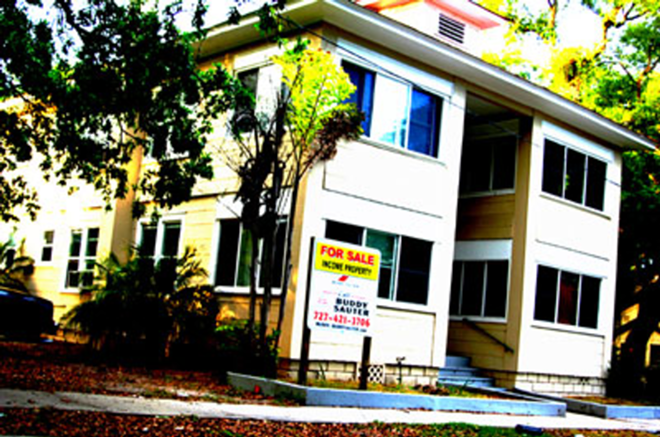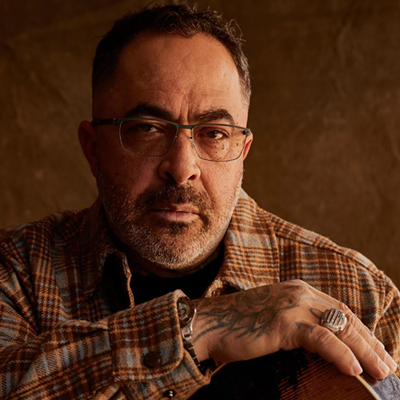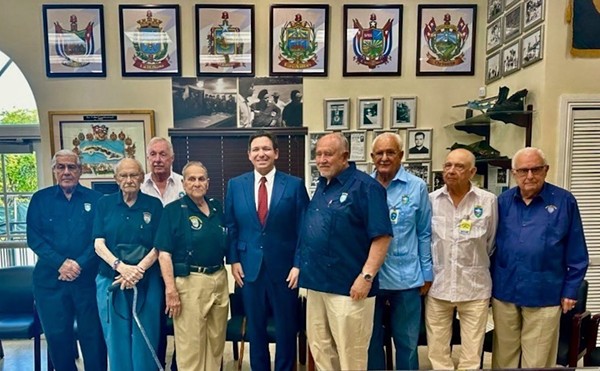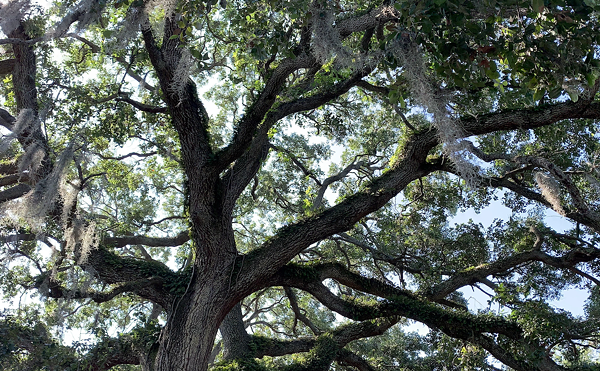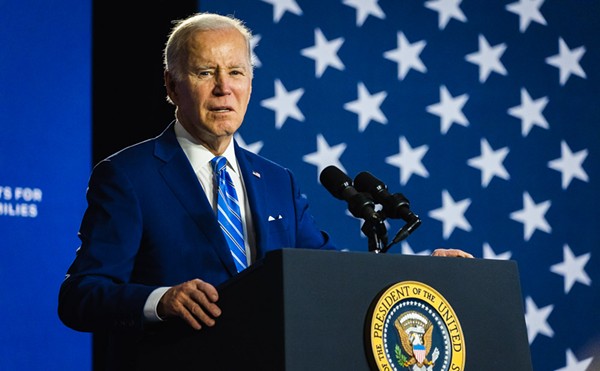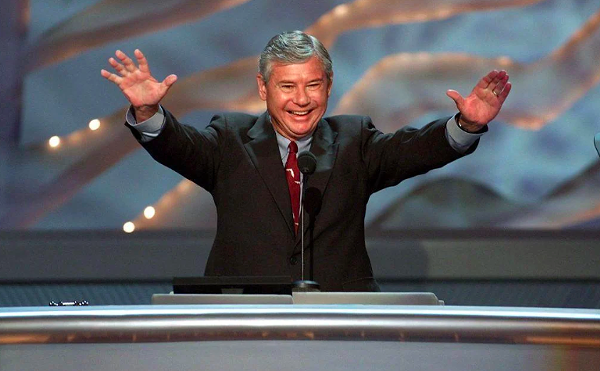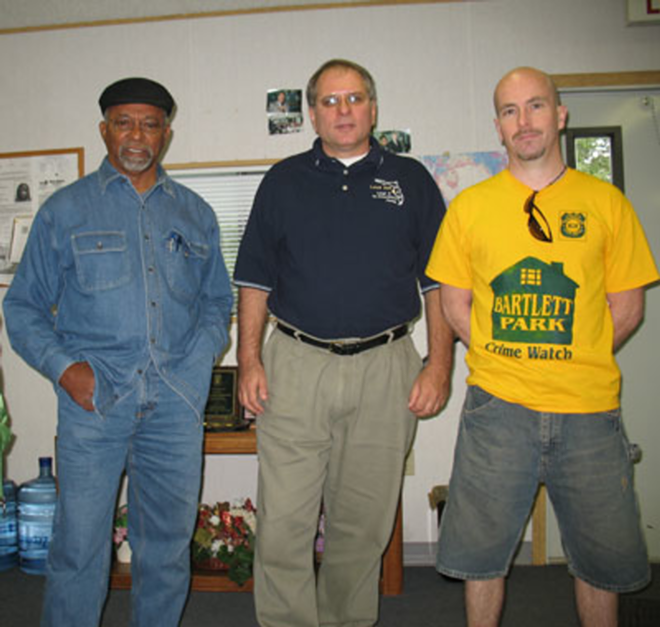
As I type this, the sharp whine of buzz saws and the crash of cinderblocks fill my street. Construction workers yell at each other over the din of a bulldozer tearing into the vacant lot across from my house. I can almost hear someone mutter: "There goes the neighborhood."
For the last year since moving to the Bartlett Park section of South St. Pete, I've looked out onto that vacant lot wondering who would eventually build on it.
Some of my neighbors have gone beyond curiosity to outright hostility. Case in point: Construction crews brought a blue portable toilet to the site a few weeks ago. For several days straight, workers arrived to find the toilet tipped over. The culprits weren't just bored teenagers, but angry adults, too.
Why the rude welcome? After all, the prospect of new construction in this area is a good thing in the eyes of some residents. In the 1980s and '90s, the neighborhood — bordered on the east and west by Fourth Street and Martin Luther King Jr. Boulevard, and on the north and south by 11th and 22nd avenues — was known more for its drugs and crime than for its famous tennis center or its Mediterranean Revival architecture. But now investors and homeowners are flocking in, building new houses and new lives, raising the average income by 43 percent between 1990 and 2000.
At the same time, though, housing stock is becoming depleted as dilapidated buildings are razed into vacant lots more suitable for sale. Higher property values mean larger tax bills and rising rents. The demographics are changing — homeownership is increasing, and the white population is expanding as African-American numbers decrease — yet the area's unemployment rate and the number of residents living below the poverty line remain higher than in the rest of the city.
A 2006 Urban Institute study used a loaded word to describe what's going on in Bartlett Park: "gentrification."
And tensions inevitably follow in gentrification's wake.
"We're already seeing that more people are being moved out of this community because they can't afford it," says longtime resident Thelma Patterson, adjusting her eyeglasses. "Houses are empty. People can't pay the rent because white folks have raised the rent."
As a white, renting resident, I'm in the middle. As a young professional, I'm able to afford rents a little higher than those who live below the poverty line. Residents tell me white people never used to set foot in the neighborhood "unless they were buying" (i.e. drugs); now I suspect my presence and that of other white neighbors may put some "urban pioneers" at ease.
Still, just like the poor artists who carved a niche for themselves in places like New York's SoHo district, I've been affected by the neighborhood's success. My landlord, Scott Swift, whose property taxes and insurance rates have skyrocketed over the past year, is raising the rent on my one-bedroom house by $200 a month. I can't blame him — he says he's been losing money on the house for months now.
And he doesn't buy the theory that white folks are pushing out the black folks.
"I'm not here to kick people out," he says, standing in front of my rental property one weekend. "I just want a better neighborhood."
But as I start to pack up my belongings into cardboard boxes, I can't help thinking of a question Thelma Patterson asked.
"You want to make the community better? Better for what? For who?"
There were two reasons I chose to rent in Bartlett Park: affordable rent and proximity to downtown. But since moving here, I've found another key to its appeal, despite the free-range pit bulls and the occasional sound of gunfire: a sense of community.
Turns out, that is the attribute appreciated most by longtime residents as well. Bartlett Park is one of those neighborhoods where people still wave at you from the front porch, inviting you over for a BBQ out of the oil-drum grill on their front lawn. Old men hang out under ancient, shady oak trees, playing cards and drinking beer, sometimes stopping to tell a story about "how it used to be." From the brick streets to the 1920s bungalows, Bartlett Park is one of the few spots in St. Petersburg that still has character, diversity and the working-class environment that I grew up in. As my first roommate said when she moved in, "This is the only spot in St. Petersburg where it feels like I'm in the Old South."
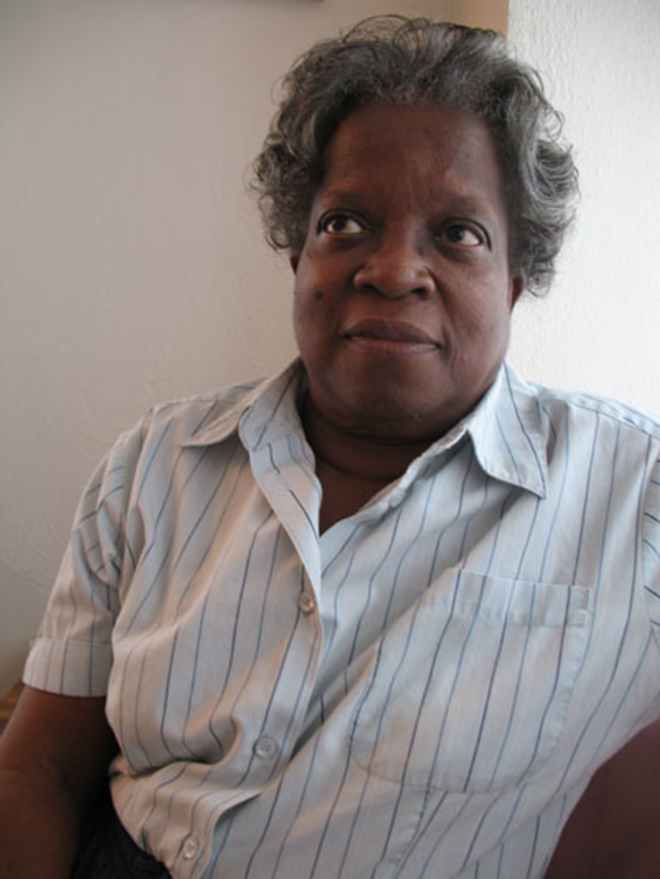
The neighborhood began life in 1913 as a small residential suburb named after St. Pete civic leader A.F. Bartlett. For decades, the neighborhood was predominantly white, middle-class and a destination for snowbirds. Willeen Kelly, who is black, moved here in 1959. "There was only one black person in my neighborhood," she remembers. Those demographics gradually changed during the '70s. When Tom Tito put $2,000 down for his house in 1974, he remembers the realtor trying to dissuade him from buying in the neighborhood.
"He told me 'It's a black neighborhood, you don't want to live here,'" Tito recalls. "When he realized I wanted it, he didn't say another word about it."
Tito says he didn't realize it at the time, but the neighborhood was in the midst of white flight. He remembers white realtors going door-to-door, urging other whites to sell their homes and leave the area.
But the neighborhood's affordability, location to Tampa Bay and the friendliness of his neighbors convinced Tito, then 18, to stay.
"I really fell in love with this neighborhood then," he says. "The people here were very friendly. The people on my block said hello to me. Some of them helped me fix up the house."
To Tito, it was a thriving neighborhood. The two main thoroughfares, Fourth Street and Ninth Street (which later became MLK Boulevard), were lined with diners, donut shops and bars. Residents could walk to a small grocery store and stroll through the park.
By the end of the '70s, Bartlett Park had turned to a mostly black neighborhood with a few Vietnamese and white families sprinkled in. Other than a few burglaries, Tito says crime was relatively low and violence unheard of.
That all changed in the '80s.
"Just out of nowhere we started seeing people selling crack," Tito recalls. "The police weren't able to cope with the crack. It just kept spreading."
Gangs and violent crime soon followed. On Tito's block alone, three teenagers were shot in the head in separate incidents. Drive-bys became commonplace. People abandoned their homes, and squatters moved in after them. Weeds overtook yards and trash overflowed into the streets. Businesses closed. Tito stopped taking walks.
This was about the time community activist Charles Payne moved into the neighborhood, which newspapers and city officials were already calling "the hole" and "the badlands." Bartlett Park was a drug haven, run by one Ronald Eugene "Romeo" Mathis, Tampa Bay's most powerful crack dealer. For years, he virtually controlled the neighborhood, employing dozens of teens as drug runners and using violence and intimidation to scare residents into silence.
Federal agents arrested Mathis in 1991, but the damage was already done. Fear of gangs and drug violence prevented any investment in the community. Poverty took hold. But neighborhood leaders, like Payne, were emboldened. They pressured the city to clear out squatters and board up homes. They started a block watch, created a neighborhood association and built a community center.
In 1993, city officials outlined a neighborhood revitalization plan for Bartlett Park, providing a $100,000 infrastructure grant to rebuild sidewalks, increase street lighting and pave alleyways. Tito says the community started to improve.
Then the 1996 riots hit. Residents set fire to several homes and businesses in the area, including the community resource center.
"The riots set us back 10 years," Tito says.
Enter Mayor Rick Baker, who along with Deputy Mayor Goliath Davis has made the revitalization of Midtown a top priority since his election in 2001. Over the last six years, over $100 million in federal grants have poured into the area. As prosperity slowly made its way into Midtown, adventurous investors have moved to enclaves like Bartlett Park, attracted to the historic housing stock, quick access to I-275 and the proximity to downtown and Tampa Bay.
Dan Thom, a tall, blonde 35-year-old investor from Chicago, was one of those early urban pioneers.
Three years ago, Thom moved his real estate investment company, Vision Investments, to St. Pete. Attracted by Baker's Midtown initiative, Thom and his business partner set their sights on the city's south side, specifically Bartlett Park.
"There were parts of the neighborhood that were war zones, and we said these war zones can't be here for much longer," he recalls.
His first investment was the Parkview Motel on 22nd Avenue South across from the football fields, a 20-unit complex "full of drugs and whores." It took him only 14 months to clean up the property and sell at a profit, he boasts.
"We took that property, stabilized it and we started making our investment quicker and also turned it around," he says. "We want to make money, of course, but we want to make a change in the neighborhoods we're involved with."
Since that first investment, Thom has maintained a presence in Bartlett Park, buying and selling duplexes and triplexes.
"Where else can you live by the bay so cheap?" he asks, smiling wide. "Bartlett Park is an opportunity. It's good living. It's a nature preserve. There's massive business opportunity. I can't see how you cannot be bullish on Bartlett Park."
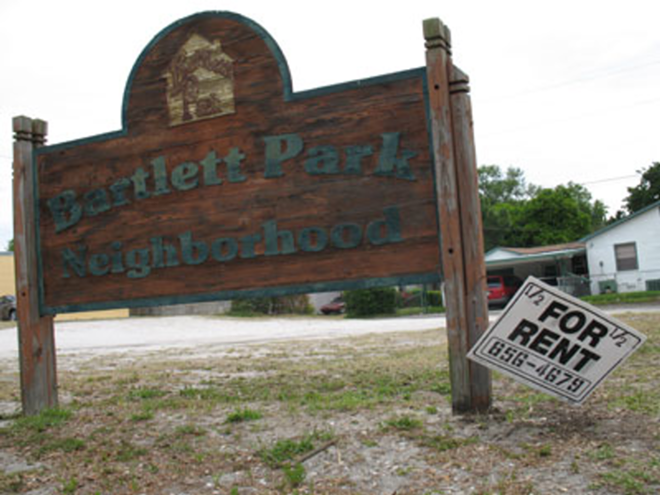
At the same time, on the northern side of Bartlett Park, developers Tom Barrett and Len Johnson transformed 11th and 12th avenues from two largely dilapidated streets into Ingleside — a kind of mini-subdivision of upscale homes.
That's significant when you consider just six years ago, according to census data, there were no homes in Bartlett Park worth more than $150,000; the vast majority were worth less than $80,000. Last year, the city's economic development office reported over 35 percent of the homes in the neighborhood were worth more than $100,000. Anecdotes from realtors in the area say the increase in property values has been dramatic, rising by double digits.
Askia Aquil, director of St. Petersburg's Neighborhood Housing Services, which helped many low-income families purchase homes in the mid-'90s, says Bartlett Park exceeded expectations.
"When I started [in 1997], the city was giving away lots," he says, describing 50,000-square-foot vacant lots selling for $3,500. "Now, they can run $30,000-$40,000."
The recent cooling in the real estate market has put at least one project on hold: the Windward complex, which would have put million-dollar condos on Fourth Street South overlooking Tampa Bay and Bartlett Park. But another developer plans to erect townhouses on what was once a crime-ridden apartment complex in the same area. And one businesswoman has even suggested a Starbucks at the site of an old porn store.
"It is so close to so much that is going to be developed," says St. Petersburg City Councilmember Ernest Williams, whose district falls in Bartlett Park. "I think you are going to see some real dynamic changes."
The influx of newcomers has boosted other revitalizing measures. New residents have joined the neighborhood association, organized drug marches and volunteered for trash clean-ups. They started a new crime watch program and pressured the city to send more patrols through the neighborhood. Code enforcement in the area is the strongest it has been in years, and Councilmember Williams is promising improvements in the neighborhood's infrastructure — streetlights, speed bumps and, in Bartlett Park's case, a boardwalk through the park that bears the neighborhood's name.
Revitalization hasn't been without its challenges. City records show renters still outnumber homeowners, which many residents say leads to more crime and less involvement in the neighborhood. Crime in Bartlett Park is far from gone. A 16-year-old who lived up the street from me allegedly raped a jogger in Old Southeast. There have been two drive-by murders in the adjacent Harbordale neighborhood this month.
"I don't think [gentrification] has happened yet," says Julie Richey and Stewart Nicol, a younger couple who bought a house in Bartlett Park almost two years ago. Richey has been mugged and their garage burglarized twice since moving in.
"You don't see middle-class white families moving in here, and I don't think there will be for a long time."
Still, the members of the neighborhood's crime watch group are positive.
"Overall, we're all positive," says Willeen Kelly. "Crime watch is going to work."
But with revitalization there is a duality. A new life for one family becomes higher rent for another. Improved housing to some means unaffordable housing to others. Newcomers take a stand against crime and demand more police attention, in turn making the neighborhood safer for everyone. But at the same time, this raises property values. Slowly, residents sacrifice economic security for physical security. And the ultimate paradox is the neighborhood's poorest residents lose either way.
"We like to tell people that revitalization is a double-edge sword," Aquil says from his office in Bartlett Park. "You can't have the new without giving up some of the old."
The March 8 meeting of the Bartlett Park Neighborhood Association draws an overflow crowd to the Neighborhood Housing Services building. Older African-American women sit together along the U-shaped table in the middle of the room, while younger, and mostly white, residents stand or sit on the chairs lining the back of the room.
After city officials give numbers on code enforcement and crimes in the neighborhood, association president Tom Tito turns his attention to two vacant officer positions.
As nominations begin from the floor, the grumbling begins.
Arguments over who can vote in elections have been heated since the last election turned a largely black executive board into a majority white one. Some of the older African-American women contend the election was unfair because individuals who owned property, but didn't live in the neighborhood, were allowed to vote. The secretary and second vice president resigned in January, creating the vacancies Tito is trying to fill today.
As voices rise, the quarrel turns into a dispute over the association's by-laws. One of the white residents shushes an older African-American lady. That enrages two younger black men.
"You need to show respect!" one of them shouts.
Tito can't keep order as the dispute escalates. Some of the members leave the room. Officer Santiago, the neighborhood's former community police officer, follows outside to make sure no fights ensue.
"This is one of the more well-behaved meetings we've had," vice president Scott Swift sighs. "We never get anything accomplished. We come here and argue, argue, argue and never solve anything."
Tito knows emotions are too raw to get anything done today, so he adjourns, with the tacit approval of the rest of the membership.
When residents, black or white, are asked why there's so much tension at the neighborhood association meetings, they all say the same thing: "It's a race issue."
But to ask who is making it a race issue would start an even bigger argument.
Thelma Patterson says that argument needs to happen. She's even called on City Hall to help organize it. Patterson, a "60-plus" woman who has lived in her small Seventh Street S. home for 37 years, sits on her floral-patterned couch, speaking carefully about the tensions that surfaced when white people started coming back to the neighborhood.
"When they come in they want to make this too quick like Snell Isle or Tierra Verde," she says, peering grimly at me. "They are trying to force the low-income out of here."
Patterson says she speaks from experience. She was forced out of her home when the city decided to level sections of Jordan Park to make room for I-275. So she moved to Bartlett Park, looking for an affordable place to raise her family. Patterson says she has "seen the best and the worst" of Bartlett Park. Now, as she puts it, "The music is coming back, and people want to be where the music is playing."
But the recent changes in the neighborhood overwhelm her.
"I welcome change, but it's how you present your change," she says. "It takes time for change to come about."
Sherry Howard, who lives around the corner from Patterson on Newton Ave., tries to be diplomatic. Howard, a 36-year-old real estate broker in St. Pete, knows the good changes that come with revitalization. But she also notices the empty rentals on her block and her friends, unable to afford rent, who have moved back in with relatives. And as a former resident of places like downtown Atlanta and Chicago's Uptown, she has seen what happens gentrification takes hold.
"Growth is inevitable, change is inevitable," she says matter-of-factly between bites of salad at Chattaways, the quaint burger joint on the neighborhood's southeast corner. "It's a good thing, not a bad thing. But my concern is how is it going to impact the people who live here. Me too, as a homeowner."
Overall, Howard says she is happy with the changes, but she cautions that newcomers are "too aggressive" about making decisions that affect the entire neighborhood. For older people, most of who lived through St. Petersburg's segregation days, that doesn't sit well, she says.
"These people are 50, 60, 70 years old," Howard says. "They remember how things used to be. They couldn't get white people to come into the neighborhood. Now they're coming in and want to change everything and do it the way they want to do it. ... Change is good and all around us. However, it is the way that we choose to do it."
Swift, 41, has heard all of this before. And frankly, he can't understand it. He organizes neighborhood clean-ups. He works heavily in the neighborhood crime watch group. He petitions city officials to do something about the pervasive litter in the neighborhood.
In his view, residents are either on the rising boat or not. It's not his place to play the race card. He's too busy picking up trash.
"I have an interest here," he says. "I own property and I want equal say."
Thom of Vision Investments has much the same attitude.
"Where there's change, it's automatically associated with some turbulence," he says, carefully choosing his words.
But as far as raising rent on the properties he buys, Thom makes no apologies. "We're businessmen," he says. "We raise rents for a living."
Councilmember Williams has sat on several association meetings. He's talked to the newcomers and the older residents. He doesn't think racial politics or even gentrification is the cause of neighborhood tensions. He prefers "growing pains."
"It has become racial," he acknowledges. "I don't think it's rooted in racism. That's more of a result [of conflict] than it starting out that way."
Nobody can predict what Bartlett Park will look like in five years, although everyone seems to have an opinion.
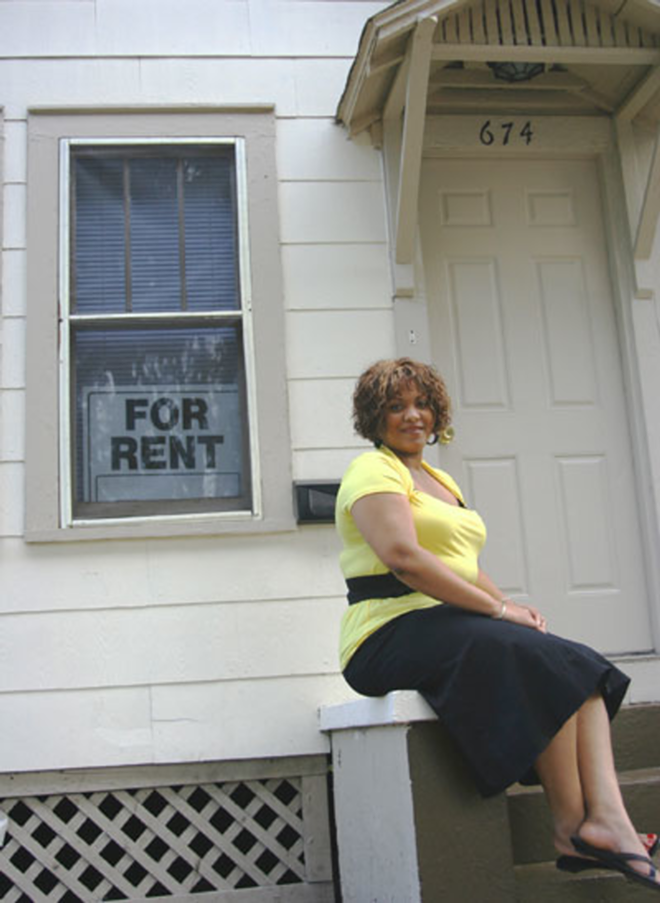
Swift and Thom say as Bayfront Hospital and University of South Florida expand, Bartlett Park could become a haven for college students escaping dorm rooms and nurses looking for affordable housing. Tito thinks the abundance of vacant lots should prevent some of the displacement that occurs when affluent buyers eye the neighborhood for real estate. Former neighborhood association president Betty Beeler says the older African-American residents will stay put in the area instead of trying to start over somewhere else.
Others aren't as optimistic. Last October, I talked to the 13th Street Heights neighborhood association president Kiambu Mudada. Thirteen Street Heights, on the other side of MLK from Bartlett Park, isn't as far along in revitalization, but Mudada says his association members are less concerned with crime than with "what the neighborhood is going to look like in five years."
"When you say revitalization, what do you mean?" he said from his home on 12th Street S. "People are worried we will not have a black community 10 years from now."
Although he isn't seeing residents pushed out of neighborhoods yet, Councilmember Williams says the city is committed to helping residents stay in their communities.
"We have to do whatever we can to help them," he says. "They've paid their dues."
I'm sure I won't have a problem finding somewhere to rent next month. But I think the larger question will continue to loom in my mind: How long until St. Petersburg becomes unaffordable for the average resident? Will there ever be enough affordable housing? And what about the rest of Florida, which has priced thousands out of the state already?
These are heady questions that city officials, community activists and the media will have to explore in the coming years.
But for now, I have to pack.

